Complete Solutions to Level 3 of chapter MECHANICAL PROPERTIES OF FLUIDS of Class 11 book with complete answers and questions
| Class 11 | PHYSICS |
| Chapter | MECHANICAL PROPERTIES OF FLUIDS |
| NARAYANA | Level 3 |
| Number Of Questions | 29 |
| Academic Year | 2023-24 |
A hydraulic press with the larger piston of diameter 35 cm at a heigth of 1.5 m relative to the smaller piston of diameter 10 cm. The mass on the smaller piston is 20 kg. What is the force exerted on the load placed. On the larger piston ? The density of oil in the press is `750 kg m^(-3)`
View Solution
The hydraulic press shown in the figure is used to raise the mass `M` through a height of 5.0 mm by performing 500 J of work at the small piston. The diameter of the large piston is 10 cm while that of the smaller one is 2 cm. The mass M is
View SolutionA small ball of density `rho` is immersed in a liquid of density `sigma(gtrho)` to a depth `h` and released. The height above the surface of water up to which the ball will jump is
View SolutionA bowl of soap water is at rest on a table in the dining compartment of a train, if the acceleration of the train is `g//4` in forward direction the angle made by its surface withh horizontal is
View SolutionA metallic sphere with an internal cavity weighs `40 gwt` in air and `20 gwt` in water. If the density of the material with cavity be `8g per cm^(3)` then the volume of cavity is :
View SolutionA cylindrical tank has a hole of `2cm^(2)` at its bottom if the water is allowed to flow into tank from a tube above it at the rate of `100cm^(3)//s` then find the maximum height upto which water can rise in the tank (take `=g=10ms^(-2)`)
View SolutionA vessel has water to height of 40 cm. it has three horizontal capillary tubes of same diameter each of length 15 cm coming out at height 10 cm, 15 cm, 20 cm .The length of a single tube of same diameter as that of the three tubes which can replace them when placed horizontally at the bottom of the vessel is:
View SolutionA spherical solild of volume V is made of a material of density `rho_(1)`. It is falling through a liquid of density `rho_(2)(rho_(2) lt rho_(1))`. Assume that the liquid applies a viscous froce on the ball that is proportional ti the its speed v, i.e., `F_(viscous)=-kv^(2)(kgt0)`. The terminal speed of the ball is
View SolutionA block of mass 1 kg and density `0.8g//cm^(3)` is held stationary with the help of a string as shown in figure. The tank is accelerating vertically upwards with an acceleration a `=1.0m//s^(2)`. Find
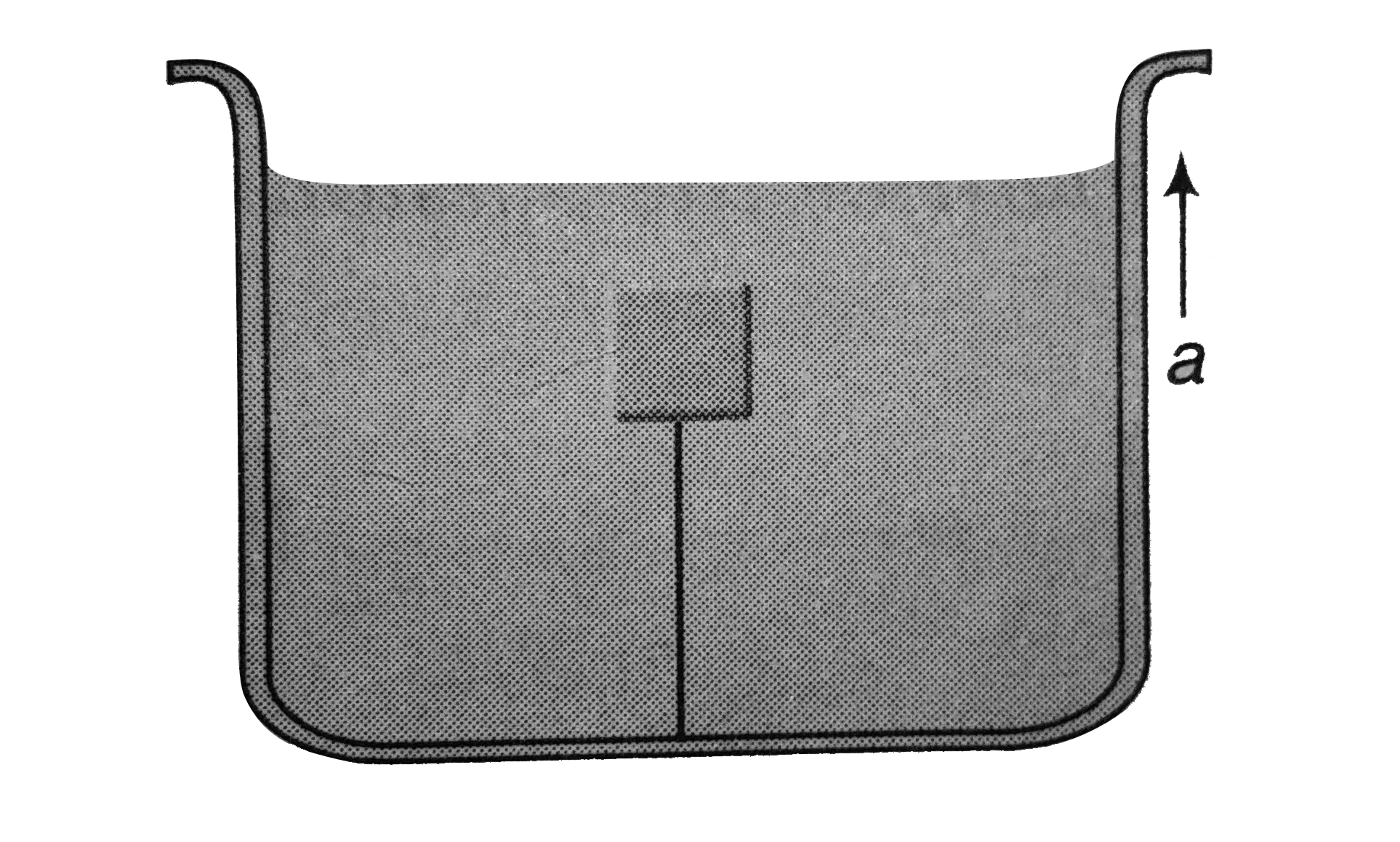
(a) the tension in the string,
(b) if the string is now cut find the acceleration of block.
(Take `g=10m//s^(2)` and density of water `=10^(3)kg//m^(3))`.
View SolutionFig, shows a U-tube of uniform cross-sectional area `A` accelerated with acceleration a as shown. If `d` is the separation between the limbs. Then the difference in the levels of the liquid in the `U-tube` is
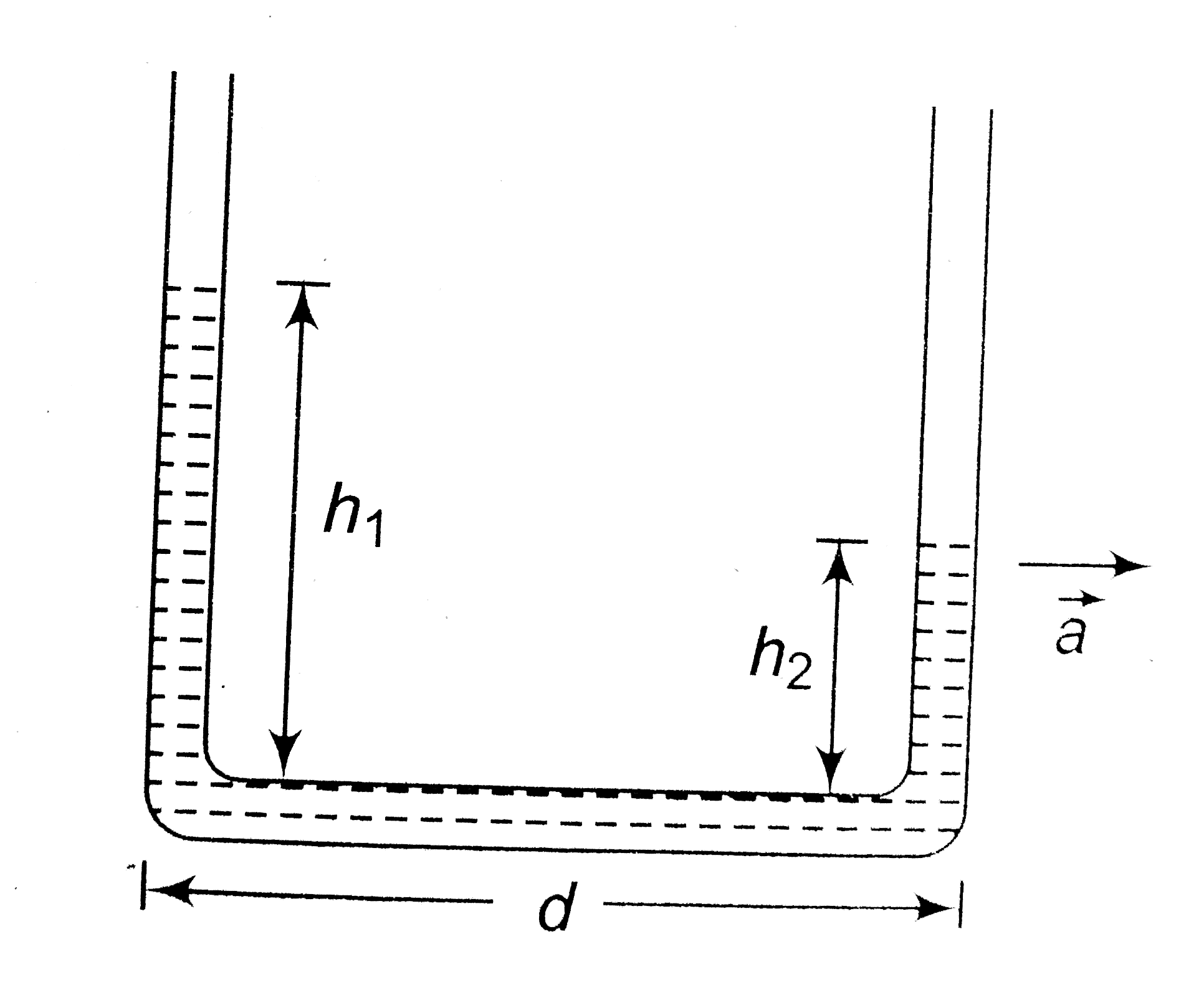
View SolutionA cubical block of wood of edge 3 cm floats in water. The lower surface of the cube just touches the free end of a vertical spring fixed at the bottom of the pot. Find the maximum weight that can be put on the block without wetting it. Density of wood =`800 kgm^-3` and spring constant of the spring `=50Nm^-1 Take g=10ms^-2`.
 ,
,
View Solution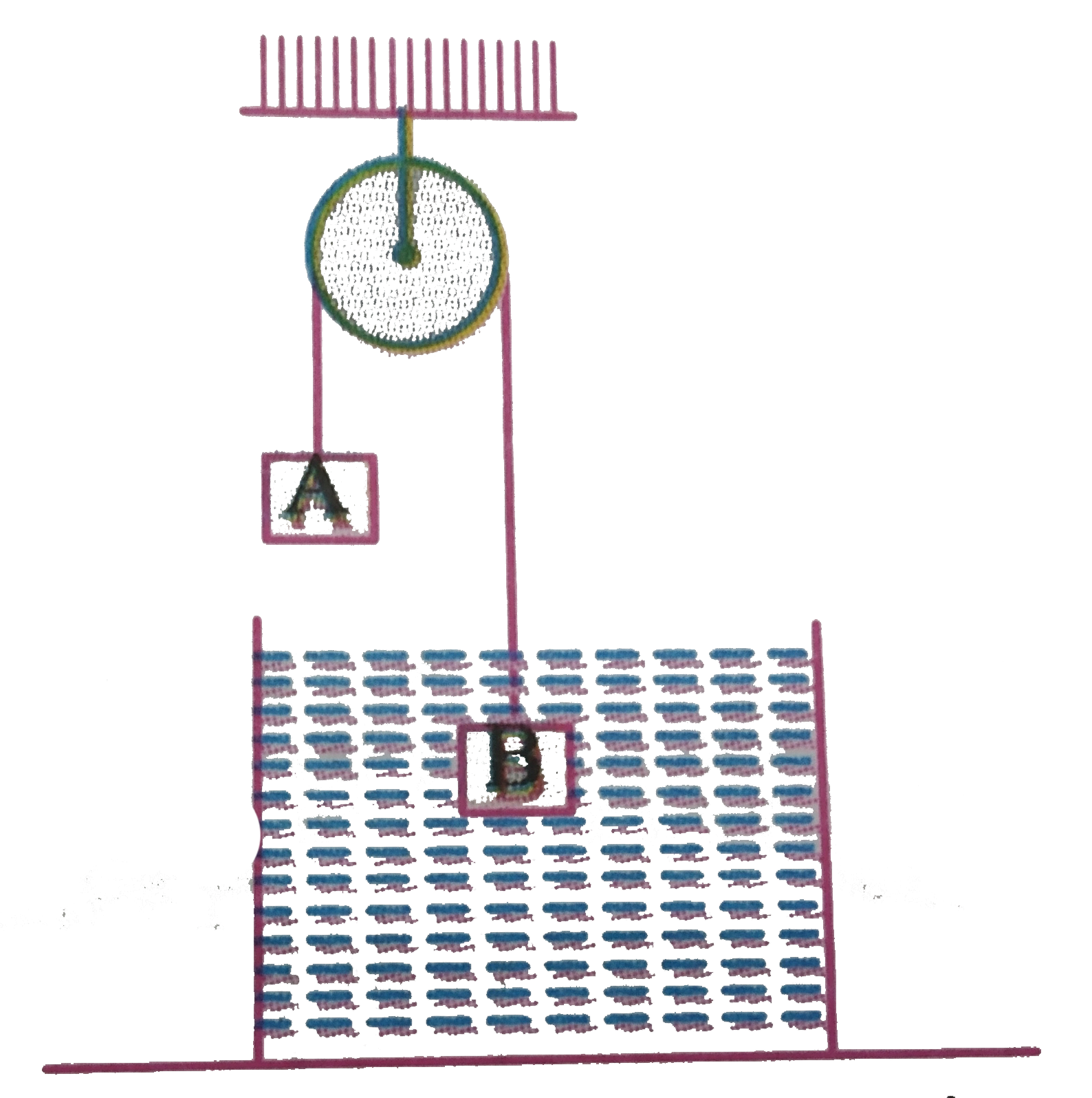
In the arrangement shown in the figure `(m_(A))/(m_(B))=(2)/(3)` and the ratio of density of block B and the liquid is `2:1` The system is released from rest. Then
View SolutionA square box of water has a small hole located the bottom corners. When the box is full and sitting on a level surface, complete opening of the hole results in a flow of water with a speed `v_(0)` as shown in Fig. (a). when the box is still half empty, it is tilted by `45^@` so that hole is at the lowest point. Now the water will flow out with a speed of
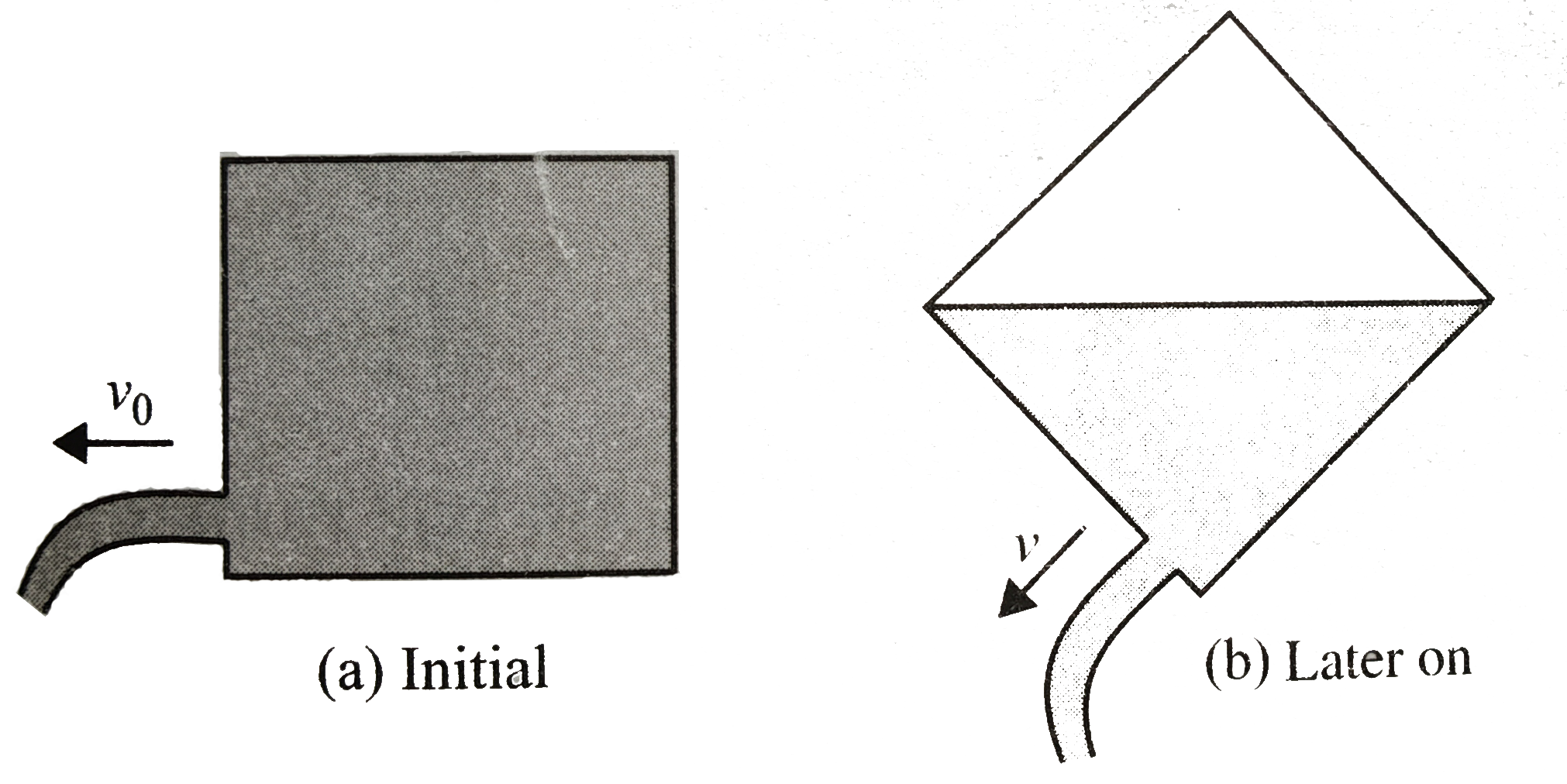
View SolutionA liquid of density `rho` is flowing with a speed v through a pipe of cross sectional area A. The pipe is bent in the shape of a right angles as shown. What force should be exerted on the pipe at the corner to keep it fixed?
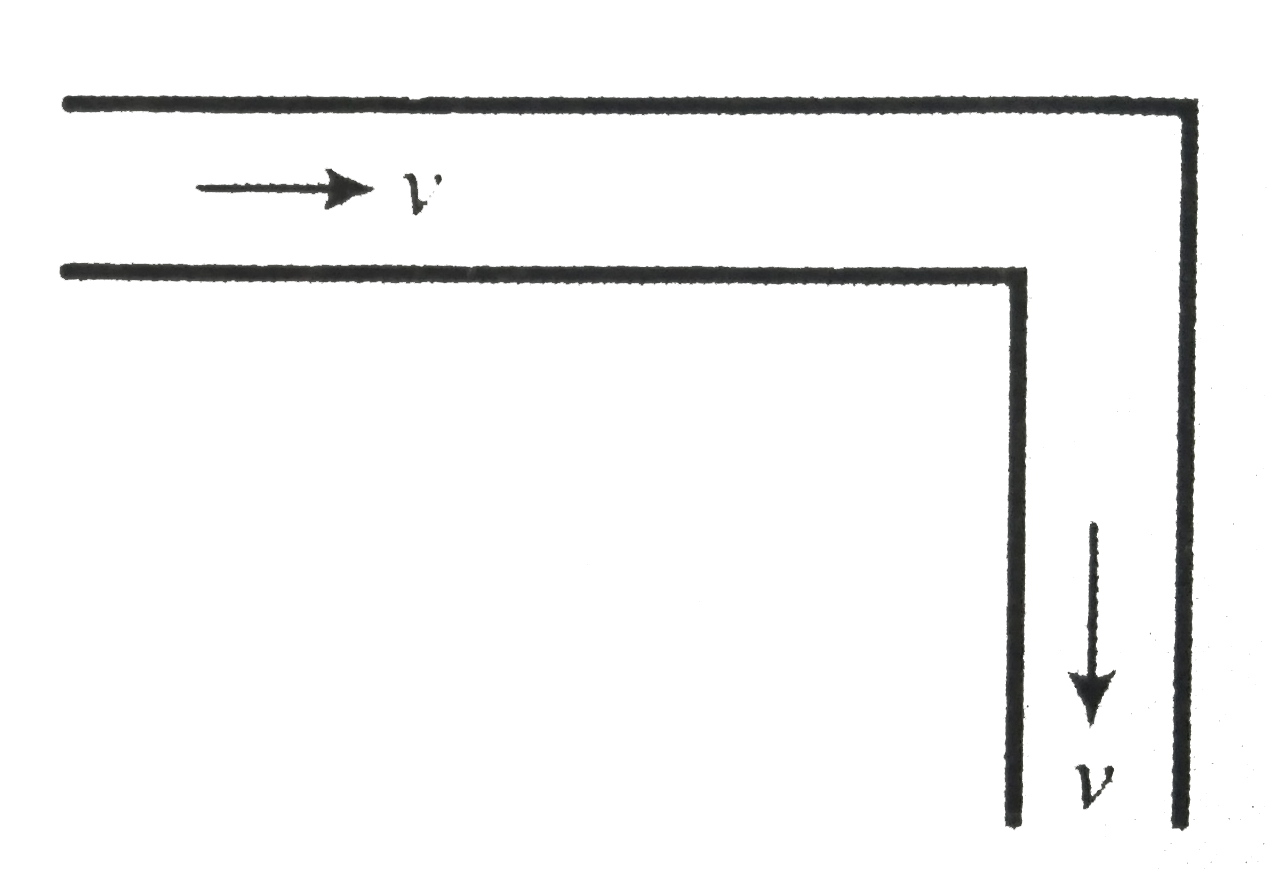
View SolutionA light cylindrical vessel is kept on a horizontal surface it's base area is `A`. A hole of cross-sectional area `a` is made just at it's bottom side. The minimum coefficient of friction necessary for not sliding of vessel dueto the impact force of the emerging liquid.
View SolutionA small hole is made at the bottom of a symmetrical jar as shown in figure. A liquid is filled in to the jar up to a certain height. The rate of dissension of liquid is independent of level of the liquid in the jar. Then the surface of jar is a surface of revolution of curve

View SolutionA drop of water of mass `m` and density `rho` is placed between two weill cleaned glass plates, the distance between which is `d`. What is the force of attraction between the plates?
`(T=` surface tension)
View SolutionA drop of liquid of density `rho` is floating half-immersed in a liquid of density `d`. If `sigma` is the surface tension the diameter of the drop of the liquid is
View SolutionA straw `6 cm` long floats on water. The water film on one side has surface tension of `50 dyn//cm`. On the other side, camphor reduces the surface tension to `40 dyn//cm`. The resultant force acting on the straw is
View SolutionA capillary tube is immersed vertically in water such that the height of liquid column is found to be `x` on the surface of the earth. When it is taken to mine the capillary rise is `y` if `R` is the radius of the earth. Then the depth of mine is
View SolutionEight spherical droplets, each of radius `r` of a liquid of density `rho` and surface ternsion `T` coalesce to form one big drop. If `s` is the specific heat of the liquid then the rise in the temperature of the liquid in this process is
View SolutionA bubble having surface tension T and radius R is formed on a ring of radius `b(b lt lt R)`. Air is blown inside the tube with velocity v as shown. The air molecule collides perpendicularly with the wall of the bubble and stops. Calculate the radius at which the bubble separates from the ring.
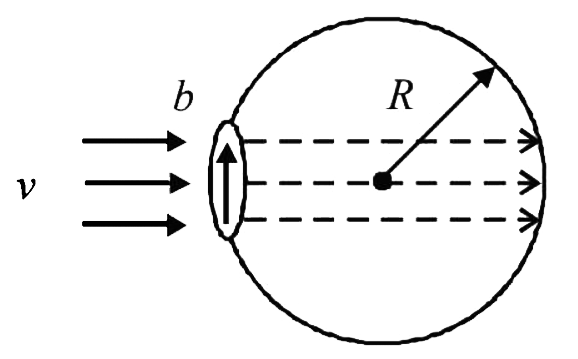
View Solution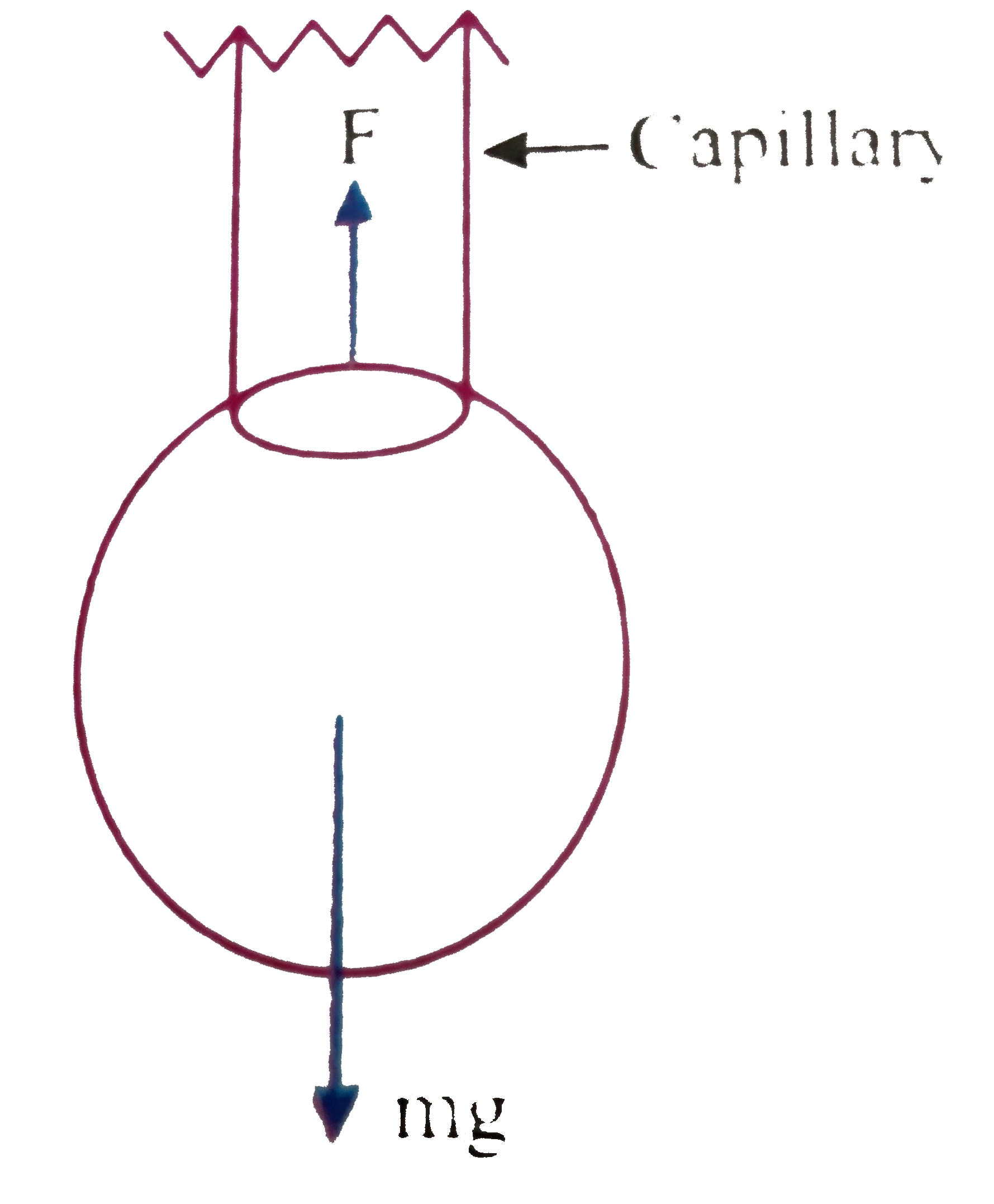
Soapy water drips from a capillary tube. When the drop breaks away, the diameter of its neck is D. The mass of the drop is `m`. Find the surface tension of soapy? Water?
View SolutionA thin liquid film formed between a U-shaped wire and a light slider supports a weight of `1.5xx10^-2N` (see figure). The length of the slider is 30cm and its weight negligible. The surface tension of the liquid film is
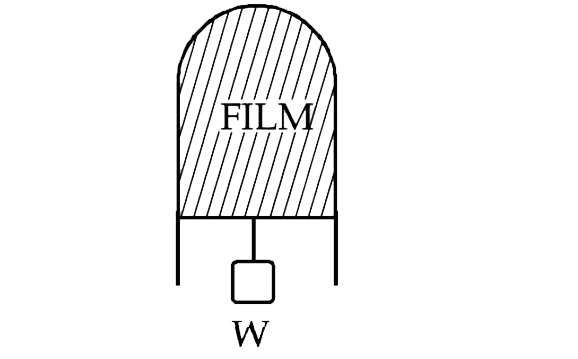
View SolutionTwo mercury drops (each of radius r) merge to form a bigger drop. The surface energy of the bigger drop, if `T` is the surface tension is
View Solutionif a ball of steel (density `rho=7.8 g//cm^(3)`) attains a terminal velocity of `10 cm//s` when falling in a tank of water (coefficient of viscosity, `eta_(water) =8.5xx10^(-4)`Ps s), then its terminal velocity in glycerine `(rho =1.2 g//cm^(2), eta =13.2 Pa s)` would be nearly
View SolutionWork done in increasing the size of a soap bubble from a radius of 3cm to 5cm is nearly (Surface tension of soap solution `=0.03Nm^-1`)
View SolutionWater is flowing continuously from a tap having an internal diameter `8xx10^-3m`. The water velocity as it leaves the tap is `0.4ms^-1`. The diameter of the water stream at a distance `2xx10^-1m` below the tap is close to:
View SolutionA ball is made of a material of density `rho` where `rho_(oil)ltrholtrho_(water)` with `rho_(oil)` and `rho_(water)` representing the densities of oil and water, respectively. The oil and water are immiscible. If the above ball is in equilibrium in a mixture of this oil and water, which of the following pictures represents its equilibrium position?
View Solution
Level 3 questions and complete solutions for chapter MECHANICAL PROPERTIES OF FLUIDS of NARAYANA PHYSICS (HINGLISH) of Class 11
All Exercises from NARAYANA Class 11 PHYSICS MECHANICAL PROPERTIES OF FLUIDS
- C.U.Q
- C.U.Q (EQUATION OF CONTINUITY, BERNOULLI.S THEOREM)
- C.U.Q (TORRICELLI.S THEOREM AND VISCOSITY)
- C.U.Q(POISEUILLE.S EQUATION)
- C.U.Q(PRESSURE, FORCE OF BUOYANCY, LAWS OF FLOATATION)
- Comprehension Type Questions
- EVALUATE YOURSELF - 1
- EVALUATE YOURSELF - 10
- EVALUATE YOURSELF - 11
- EVALUATE YOURSELF - 12
- EVALUATE YOURSELF - 2
- EVALUATE YOURSELF - 3
- EVALUATE YOURSELF - 4
- EVALUATE YOURSELF - 5
- EVALUATE YOURSELF - 6
- EVALUATE YOURSELF - 7
- EVALUATE YOURSELF - 8
- EVALUATE YOURSELF - 9
- Examples
- EXERCISE - I - (C.W) (CAPILLARITY & CAPILLARY RISE)
- EXERCISE - I - (C.W) (COEFFICIENTY OF VISCOSITY & VISCOUS FORCE)
- EXERCISE - I - (C.W) (COMBINATION OF DROPS & BUBBLES)
- EXERCISE - I - (C.W) (EQUATION OF CONTINUITY, BERNOULLI.S THEOREM AND APPLICATIONS)
- EXERCISE - I - (C.W) (EXCESS PRESSURE INSIDE A LIQUID DROP AND SOAP BUBBLE)
- EXERCISE - I - (C.W) (FORCE DUE TO SURFACE TENSION)
- EXERCISE - I - (C.W) (POISEUILLE.S EQUATION)
- EXERCISE - I - (C.W) (PRESSURE AND PASCAL.S LAW)
- EXERCISE - I - (C.W) (TERMINAL VELOCITY & VISCOUS FORCE)
- EXERCISE - I - (C.W) (TORRICELLI.S THEOREM)
- EXERCISE - I - (H.W) (CAPILLARITY & CAPILLARY RISE)
- EXERCISE - I - (H.W) (COEFFICIENT OF VISCOSITY & VISCOUS FORCE)
- EXERCISE - I - (H.W) (COMBINATION OF DROPS & BUBBLES)
- EXERCISE - I - (H.W) (EQUATION OF CONTINUITY, BERNOULLI.S THEOREM AND ITS APPLICATIONS)
- EXERCISE - I - (H.W) (EXCESS PRESSURE INSIDE A LIQUID DROP AND SOAP BUBBLE)
- EXERCISE - I - (H.W) (FORCE DUE TO SURFACE TENSION)
- EXERCISE - I - (H.W) (POISEUILLE.S EQUATION)
- EXERCISE - I - (H.W) (PRESSURE AND PASCAL.S LAW)
- EXERCISE - I - (H.W) (REYNOLDS NUMBER)
- EXERCISE - I - (H.W) (TERMINAL VELOCITY)
- EXERCISE - I - (H.W) (TORRICELLI.S THEOREM)
- EXERCISE - I - (H.W) (VARIATION OF PRESSURE, UPTHRUST)
- EXERCISE - I - (H.W) (WORK & SURFACE ENERGY)
- EXERCISE - II (C.W) (CAPILLARITY & CAPILLARY RISE)
- EXERCISE - II (C.W) (EQUATION OF CONTINUITY, BERNOULLI.S THEOREM AND ITS APPLICATIONS)
- EXERCISE - II (C.W) (EXCESS PRESSURE INSIDE A LIQUID DROP AND IN A SOAP BUBBLE)
- EXERCISE - II (C.W) (FORCE DUE TO SURFACE TENSION)
- EXERCISE - II (C.W) (POISEUILLE.S EQUATION)
- EXERCISE - II (C.W) (PRESSURE AND PASCAL.S LAW)
- EXERCISE - II (C.W) (TERMINAL VELOCITY)
- EXERCISE - II (C.W) (TORRICELLI.S THEOREM)
- EXERCISE - II (C.W) (VARIATION OF PRESSURE, UPTHRUST)
- EXERCISE - II (C.W) (WORK & SURFACE ENERGY)
- EXERCISE - II (H.W) (CAPILLARITY AND CAPILLARY RISE)
- EXERCISE - II (H.W) (EQUATION OF CONTINUITY, BERNOULLI.S THEOREM AND ITS APPLICATIONS)
- EXERCISE - II (H.W) (EXCESS PRESSURE IN A LIQUID DROP AND IN A SOAP BUBBLE
- EXERCISE - II (H.W) (POISEUILLE.S EQUATION)
- EXERCISE - II (H.W) (PORCE DUE TO SURFACE TENSION)
- EXERCISE - II (H.W) (TORRICELLI.S THEOREM)
- EXERCISE - II (H.W) (VARIATION OF PRESSURE AND UPTHRUST)
- EXERCISE - II (H.W) (WORK & SURFACE ENERGY)
- EXERCISE - III
- Illustration
- Level 1 (C.W)
- Level 1 (H.W)
- Level 2 (C.W)
- Level 2 (H.W)
- Level 3
- More Than One Alternative Type Question
- Paragraph Type Questions
- Single Answer Questions
- Statement Type Questions